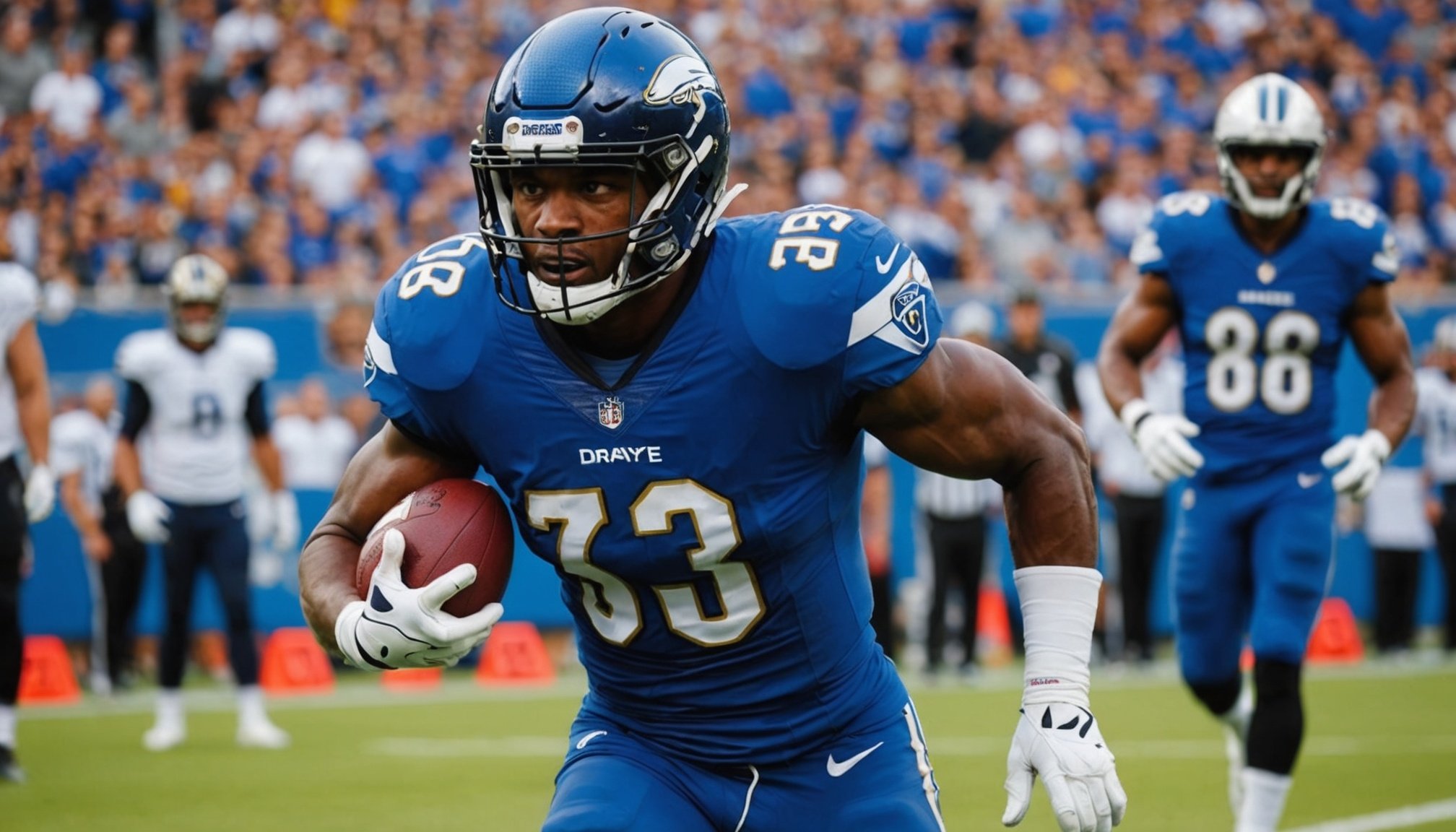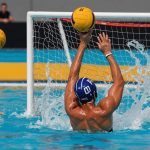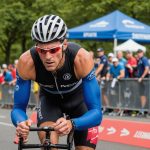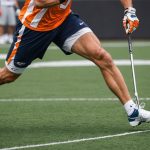Overview of Recovery Techniques for Football Players Over 30
In the demanding world of football, recovery techniques play a pivotal role in maintaining and enhancing athletic performance, especially for players over the age of 30. As athletes age, they face specific challenges, such as decreased muscle elasticity and longer injury recovery times. Consequently, adopting age-related strategies becomes crucial for sustaining their competitive edge.
Football players over 30 often rely on a combination of recovery techniques to address these challenges and ensure optimal performance. One essential method is proper hydration and nutrition, which support faster muscle repair and energy restoration. In addition, incorporating advanced technologies like wearable recovery devices can help monitor and enhance overall wellness effectively.
Have you seen this : Unlocking the secrets of effective multicultural communication in football teams: proven strategies for success
Massage therapy and physiotherapy are also integral components of a footballer’s recovery regimen, aiding in muscle relaxation and joint health. Cryotherapy, which involves exposing the body to extremely cold temperatures, is another popular method. It helps reduce inflammation and accelerate recovery processes.
Furthermore, tailored stretching and yoga routines can address flexibility issues, while adequate sleep reinforces the body’s natural healing. These strategies, when employed consistently, allow players to maintain their peak performance levels despite the age-related challenges they face. By embracing these recovery techniques, footballers over 30 can make informed decisions to prolong their careers while staying at the top of their game.
Additional reading : Essential heart health management techniques for professional football athletes: key strategies for optimized monitoring and maintenance
Stretching and Flexibility Exercises
Enhancing flexibility is crucial for athletes, particularly for football players, to optimise performance and prevent injuries. Understanding the benefits of stretching techniques is vital. Dynamic and static stretching offer distinct advantages and applications.
Dynamic stretching involves controlled movements that improve range of motion and elevate muscle temperature. These movements, like leg swings or arm circles, mimic the activity to be performed. Such stretching is advantageous pre-game, as it prepares muscles, enhances agility, and prevents stiffness, reducing injury risk.
Conversely, static stretching requires holding a position for a period, typically post-exercise, to assist in muscle recovery and lengthening. For instance, hamstring stretches can relieve tightness and improve flexibility, decreasing injury likelihood.
Football players benefit from tailored routines. Recommended programs commence with dynamic stretching to ‘warm up’ muscles. Incorporating lunges, squats, and high-knees enhances muscle elasticity and joint function. Post-game, static stretches focus on major muscle groups like quadriceps and calves, aiding recovery and reducing soreness.
Overall flexibility directly influences performance levels and decreases injury susceptibility. Proper stretching techniques enhance muscle coordination and strength, enabling superior performance. Emphasising both dynamic and static stretching yields a balanced regimen, facilitating optimal athletic conditions, vital for football success.
Nutrition for Optimal Recovery
To maximise performance and aid in effective recovery after sports, understanding the intricacies of sports nutrition is essential. Correct dietary strategies provide the building blocks needed for muscle repair.
Key Nutrients for Muscle Repair and Recovery
Muscles primarily need proteins, carbohydrates, and fluids for optimal healing. Proteins play a crucial role in repairing damaged muscle tissue. Incorporating lean meats, fish, eggs, and dairy products ensures adequate protein intake. Carbohydrates replenish glycogen stores depleted during physical activity. Foods like whole grains, fruits, and vegetables are excellent sources. Don’t underestimate the power of hydration; water aids nutrient transportation and supports cellular function.
Importance of Timing Meals for Recovery
Timing is pivotal in sports nutrition. Consuming recovery meals within 30 to 60 minutes post-exercise is critical. This window, often referred to as the “anabolic window,” is when muscles are most receptive to nutrient absorption. Scheduling meals and snacks according to this principle can greatly enhance recovery speed and efficiency.
Examples of Effective Recovery Snacks and Meals
Choose items that combine the right nutrients. Here are some viable choices:
- Greek yoghurt with a banana.
- Peanut butter and whole grain toast.
- Smoothie made with spinach, berries, and protein powder.
These examples incorporate the elements essential for muscle repair and should be tailored to individual dietary preferences and needs.
Hydration Strategies
In the realm of football and athletic pursuits, hydration is a critical factor that influences recovery and performance. Proper hydration supports essential bodily functions such as temperature regulation, nutrient transport, and joint lubrication. When an athlete is not adequately hydrated, several negative consequences can arise, impacting overall performance and recovery. Recognising the signs of dehydration is crucial for maintaining optimal athletic function and preventing injuries.
Importance of Hydration
Dehydration can lead to symptoms like fatigue, dizziness, and decreased coordination, all of which hinder athletic performance. Moreover, it’s closely tied to prolonged recovery times, as the body requires adequate fluids to repair and regenerate tissue. For football players, the physical demands of the sport make effective hydration strategies imperative.
Signs of Dehydration
Recognising dehydration involves noting symptoms such as increased thirst, dry mouth, reduced urine output, and dark-coloured urine. An athlete experiencing these signs should prioritise rehydration to restore balance and support performance.
Recommended Hydration Plans
For optimal results, football players should adopt a structured hydration plan. Pre-game hydration involves consuming about 500-600 ml of water 2-3 hours before the match. Post-game recovery should include replenishing lost fluids by drinking 1.5 times the fluid lost during exercise. Monitoring urine colour can help ensure adequate hydration levels are maintained both pre- and post-game.
The Role of Rest and Sleep
Understanding the importance of sleep is crucial for anyone aiming to enhance muscle recovery and overall performance. During sleep, the body goes into repair mode, mending tissues and muscles that have been stressed during workouts or physical activities. This natural recovery time is instrumental in preventing injuries and ensuring athletes can perform at their best consistently.
Incorporating effective rest strategies can significantly enhance sleep quality. Establishing a consistent sleep schedule by going to bed and waking up at the same time daily anchors the body’s internal clock, promoting better sleep patterns. Creating a calming bedtime routine, such as reading or taking a warm bath before hitting the bed, can also cue the body it’s time for sleep.
It’s vital to consider the recommended rest periods between training sessions and games. Generally, allowing a minimum of 48 hours of rest between strenuous activities aids in optimal muscle recovery. This downtime lets the body replenish energy stores, repair tissues, and prepare for the next physical demand.
Being mindful of these elements—sleep importance, rest strategies, and balanced recovery time—forms the foundation for athletes who aim for improved performance levels while maintaining high standards of health and well-being.
Mental Health Practices for Recovery
Focusing on mental health is crucial for athletes aiming to excel in their performance. Mental well-being plays a significant role not just in maintaining physical stamina but also in enhancing overall athletic performance. Ensuring that athletes have robust mental health practices in place is paramount.
There are several effective recovery techniques that athletes can incorporate into their routines. Stress management techniques are essential in maintaining equilibrium during periods of intense training or competition. Methods such as deep breathing exercises, progressive muscle relaxation, and guided visualisation can all contribute to reducing stress levels and promoting mental recovery.
Mindfulness and meditation have gained traction as impactful tools for enhancing focus and recovery. Mindfulness encourages athletes to remain present and focused, reducing anxiety and enhancing concentration. This practice, alongside meditation, allows individuals to connect deeply with their inner selves, fostering a positive athlete mindset.
In the demanding world of competitive sports, cultivating a strong athlete mindset is vital. This involves not only physical preparation but also mental fortitude. By actively engaging in these practices, athletes can build resilience, improve their focus, and enhance recovery, thereby supporting their journey towards achieving peak performance levels. Embracing these mental health practices offers athletes a well-rounded approach to achieving success both on and off the field.
Tailoring Training Routines
Training routines are not one-size-fits-all, especially when age becomes a factor. Age considerations are crucial in determining suitable training adjustments. As athletes grow older, their bodies require different levels of training intensity and frequency. For players over 30, adjusting these factors is vital for maintaining performance and reducing the risk of injuries.
Training adjustments involve careful planning to balance strength workouts with appropriate recovery periods. Older athletes might find they need more time to recuperate between intense sessions than their younger counterparts. A well-considered recovery strategy can lead to significant performance improvement. Prioritising rest helps muscles repair and grow stronger, ultimately improving endurance and strength over time.
Specific recommendations for training modifications could include incorporating more flexibility exercises, such as yoga or pilates, which can aid in maintaining joint health. Additionally, integrating low-impact cardio, rather than high-intensity activities, may help safeguard against stress-related injuries.
Moreover, balancing strength training with recovery is not merely about physical rest. Mental recovery, through activities like meditation or light reading, can also play an essential role in sustaining high-performance levels. These strategic training modifications aim to support seasoned athletes in maintaining their peak performance while acknowledging the natural physiological changes that occur with age.
Expert Opinions and Anecdotes
In the world of sports, especially for athletes over 30, recovery is crucial. Professional players often emphasize the importance of recovery to sustain peak performance. For instance, numerous well-known athletes share personal experiences highlighting how nutritional adjustments and physiotherapy have significantly contributed to their longevity in sports. They often underscore that recovery is not just about rest, but involves an intricate balance of physical and mental strategies to maintain top form.
Sports nutritionists provide invaluable insights into recovery methods. They advocate for diets rich in anti-inflammatory foods and adequate hydration as fundamental elements for effective recovery. By offering expert advice, they equip athletes with tailored nutrition plans that cater to individual needs, ultimately enhancing performance levels.
Trainers and physiotherapists also bring their expertise into play. Their insights are critical when considering various recovery techniques such as cryotherapy, compression garments, and massage therapy. Research conducted in these fields has shown significant efficacy in reducing muscle soreness and accelerating the healing process, which is paramount for athletes who need to perform consistently.
In summary, leveraging expert advice and learning from personal experiences helps tailor recovery strategies to the demands of professional sports. By focusing on both physical and dietary regimes, athletes over 30 can enjoy extended careers while minimizing injury risks.











